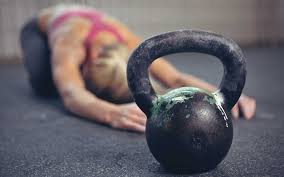Workout Myths to Stop believing!
Myth #1 If you’re not sore, you’re not working hard enough
Myth #2 Always mix it up
Myth #3 Women shouldn’t weight train

Throughout history there has been different views on exercise. There are many great ways to get into shape, but there is no single path. As long as one is consistent with a workout regime that includes strength training and stays consistent with a routine as the body adapts, they will see results.
As a society, do we have enough background knowledge to make educated decisions on what really works to make us healthy and strong? Can the average American heal disease through knowledge and application of exercise principles? The answer is yes.
However, often we are bombarded with advertisements that preach about their product being like none other. After looking closely, one can see it is often just a money making scheme. Similarly in fitness, philosophies about how to train the body are always being argued. Right now you may hear people argue over Crossfit, bodybuilding, running, yoga, progressive calisthenics, and many other modes of training being the best there is. The only way to know which way wins is to look to our bodies and how they respond. In this article I will go over common myths in training so you do not waste your precious time not seeing results.

Myth #1 If you’re not sore, you didn’t work hard enough
The main cause of muscle soreness is micro-tears in your muscles caused by training. Yes, it is alright to be sore after your workouts, but you do not need to be sore to get results. Look at your weekly training volume rather than volume per day. With a “needing to be sore mindset,” people can tend to workout really hard one day and take the rest of the week off. While any exercise is better than no exercise, our muscles need progressive overload. This overload can be achieved by an increase in weight, intensity, total repetitions, tempo or time under tension.
All of these will lead to muscle growth without necessarily making you sore. If you find yourself constantly sore, this can be a sign that your program may need changes or you need a better recovery program. Your sleep, stress levels, and diet have more to do with soreness than the effectiveness of your workout. Being sore is allowed, but don’t fall for they myth that you need to be sore to see results.
Myth #2 Always need to mix up your workouts to keep your muscles guessing

Our strength gains have more to do with our brain than we realize. Actually all initial strength gains are neural. Multiple rehearsal of movements results in stored memories in the brain called engrams. The development of engrams is one of the reasons to practice exercises consistently as opposed to always switching it up. Training adaptation is developing the ability to recruit all the motor units in an exercise pattern. The more random our workouts, the less practice we give the brain and body to work together. As your muscular strength increases, less muscle will be activated and this means the stress needs to increase.
This is where people usually feel like they have reached a plateau and switch up their workouts, but this isn’t necessarily the case just yet. Periodization is so valuable because it can prevent you from plateauing or entering the exhaustion phase. I recommend a minimum of six to eight weeks on any given training program before moving onto something different. By this, I don’t necessarily mean utilizing the exact same exercises for the same reps and sets week after week. There are multiple ways to go about implementing progressive overload. You can increase the stress through more reps, weight, tempo, but you do not need to change the workout completely.
Myth #3 Women will get bulky if they weight train

There are a number of biological differences between men and women. First, we only have approximately 5% of the of testosterone men possess. This means that the average male has twenty times as much testosterone than the average female. Given that testosterone is the hormone primarily responsible for gaining muscle, women will have to go to great lengths to be bulky. In order to optimize the use of hormones and training we can begin by using large muscle groups when training, use high volume, and short rest periods. Life is a lot easier when you are strong, and strength training helps you lose body fat.
A person with more muscle mass will have a higher base metabolic rate, which means burning more calories at rest. Strength training increases bone density, builds a stronger heart, lowers your heart rate and blood pressure, improves blood flow and improves your balance and coordination. It also prevents heart disease–currently the leading cause of death–by helping heal health problems related to cholesterol, high blood pressure and diabetes. You can see why “women shouldn’t strength train,” is just another myth. It is also a lot of fun and a great way to relieve built up stress release! Afterwards, you will feel a sense of accomplishment and your brain produces the “feel good” chemicals like dopamine and serotonin that allow you to feel happy all day long! 🙂
Are you having trouble reaching your goals? Start by ripping out myths and replace them with empowering knowledge you can take action on. That’s step one. Go from there. If you are ready to work with me, I give everything I’ve got to get you where you want to go, I expect the same. If this is something you want to be a part of. If you want to develop a strong mind and body then schedule a call to talk with me and we’ll see if it’s a good fit!
Yours in health,
Nicole Chamberlain

